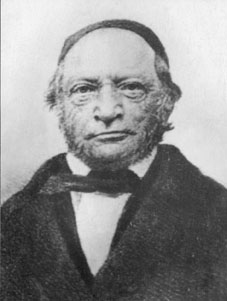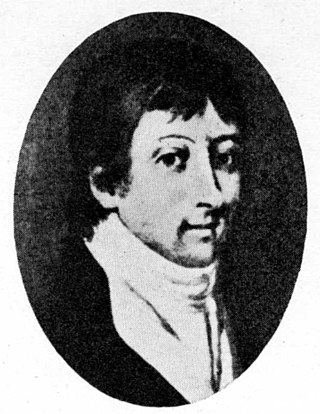
Georg Sverdrup was a Norwegian statesman, best known as one of the presidents of the Norwegian Constituent Assembly in Eidsvoll in 1814. He was a member of the Norwegian Parliament and was also responsible for the development of the first Norwegian university library.
Karen Andersdatter was the Danish mistress of King Christian IV of Denmark-Norway and the mother of one of his three illegitimate but acknowledged children, Hans Ulrik Gyldenløve.
Events in the year 1835 in Norway.

Jens Tillufssøn Bjelke was a Danish-Norwegian nobleman and a feudal lord of Jemtland, Norway, was originally from Danish Skåne. Jens Tillufssøn Bjelke was one of several notable Danes who acquired land, resided permanently in Norway, became thoroughly Norwegian and founded new Norwegian noble families, which replaced the old nobility of the first rank. He was the grandfather of Chancellor Jens Ågessøn Bjelke and great-grandfather of Governor Jorgen Bjelke.

Haagen Mathiesen was a Norwegian timber merchant, ship-owner and politician.

Nicolai Lumholtz was a Danish born, Norwegian clergyman. He served as acting bishop of the Diocese of Christiania.

Nils Joachim Christian Vibe Stockfleth was a Norwegian cleric who was instrumental in the first development of the written form of the Northern Sámi language. Stockfleth compiled a Norwegian-Sámi dictionary, wrote a Sámi grammar and translated a portion of the Bible into the Sámi language.

Kjeld Lauridsen Stub was a Dano-Norwegian priest. He was also involved in the Thirty Years' War in various roles.
Frederik Nannestad was a Norwegian theologian, author, and bishop.

Niels Wulfsberg was a Norwegian priest, newspaper editor and publisher. Born in Tønsberg, the son of a bailiff, he gained little respect as a priest in Christiania, owing to his libidinous lifestyle. He became known as the founding editor of the Morgenbladet and Tiden newspapers, in which he espoused a monarchistic and secessionist stance.
Tiden, et offentlig Blad af blandet Indhold was a royalist and secessionist newspaper in 19th-century Norway. The first issue was published on 28 January 1808 in Christiania ; the founding editor was Niels Wulfsberg. Its predecessor was Efterretninger og Opmuntringer angaaende de nærværende Krigsbegivenheder, a military periodical which was published in 43 issues in the autumn of 1807. Great Britain's blockade of Norway during the Napoleonic Wars prevented Copenhagen newspapers from being imported to Christiania; Wulfsberg started both newspapers to fill the resulting lack of information.

Jens Christian Berg was a Norwegian lawyer and historian.

Carl Deichman was a Norwegian businessman, industrialist, book collector and philanthropist. His endowment lead to the founding of the Oslo Public Library officially known as Deichman Library .

Frants Berg was a Danish clergyman who served as the Bishop of Oslo.
Niels Claussøn Senning was a Danish/Norwegian Lutheran Bishop.
Events in the year 1712 in Norway.
The expulsion of Catholics from Norway, from 1613 onwards, was a precaution taken against the Counter-Reformation movement, which was orchestrated by the Kings of Denmark–Norway, but after 1814 it was orchestrated by the Norwegian government.
Olav Torkelsson, also known as Olaf Thorkelsön, was the 31st and last Roman Catholic Bishop of Bergen, from 1523 to 1535, and a member of the Riksråd.
Events in the year 1639 in Norway.
Nils Lykke was a Danish-Norwegian nobleman, feudal lord (lensherre) and member of the Riksråd in Norway. He was the son of Danish Riksråd member and landowner Joachim Lykke and Maren Bille. In 1528 he married Eline Nilsdatter, daughter of Nils Henriksson and Inger Ottesdotter Rømer. This was a period with strong conflicts between Lutheranism, which was supported by the Danish king, and Catholicism, whose highest representative in Norway was archbishop Olav Engelbrektsson. When Lykke had a child with his sister-in-law Lucie Nilsdatter, which was regarded as incest according to the law, he was imprisoned and held at the Steinvikholm Castle, and eventually executed following Engelbrektsson's order.









